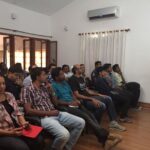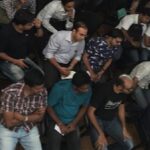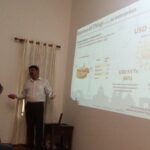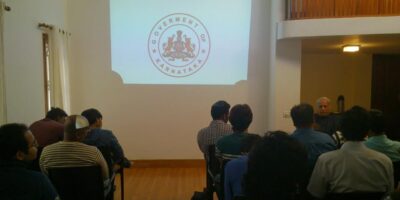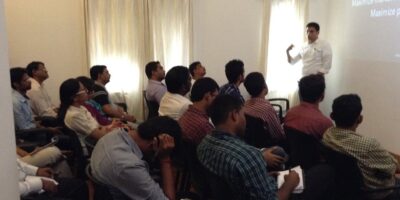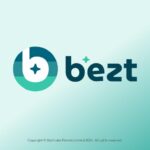Reynolds Alex, General Manager & Delivery Head – IoT Business. He is responsible for using the IoT (Internet of Things) wave to drive business growth within Wipro. Some of his areas of focus are Automotive, Transport & Logistics, Retail & Consumer Electronics. His 14 years at Wipro have covered a variety of functions – General Manager – Customer Relationship & Delivery, Wipro Eco Energy, Delivery Head, Wipro EcoEnergy amongst others. He has also worked with Netkraft, Investsmart India and AMP Rose.
Alex aims to present aspects that comprise an IoT business model. There are new IoT startups launching everyday, however all are still struggling with the key question – which business model works? Join us and find out on 7th. March 2015, 4pm. Come prepared to share your struggles in figuring a business model for your Startup.
Reynolds Alex’s session – “Internet of Things (IoT) – Focus on the Business Model ” impressed the audience using a live case study – involving a major US customer, thousands of sensors, terabytes of data, SLAs, regulatory and conformance issues – an IoT project, remotely monitored from Bangalore. Here are the Lounge47 key takeaways:
1. Business models: a. % of Outcome: Understand needs of customer. Build an IoT solution that demonstrates results that are measurable. Charge a percentage. Fine-tune and improve infrastructure on a continuous basis. Example, energy savings. b. Service Bundling: Building useful and powerful service offers around, IoT enabled hardware. This could lead to a recurring stream of revenue. E.g. In-car sensor network providing data to insurance companies c. Data Analysis: IoT can be set to capture terabytes of data. Making this data understandable takes rare skills that could be monetized. Continuous learning can only make the data richer and more usable. Also, making data anonymous – raw or insights – could lead to other monetization possibilities
2. Trends: a) Services will be the biggest bucket accounting for 60% of IoT b) Outcome driven charging is the way customers seem to be heading
3. Opportunities: a) Smart Cities: Smart metering for example, in India b) Automotive: In-car sensors, monitoring driver too, providing information to insurance companies
4. Making the Sale: Identify the Economic Buyer, Tech Buyer and Coach within the customer organization. Convincing the Coach is key 5. Team: a) To complete the early detailed understanding of the project requires young graduates, that in the first 2-3 years are assigned to understand internal documentation, trained and then able to execute at great level of detail and precision b) Team players fall into 3 buckets – people who have struggled and will drive the detail, people that have had medium struggles but can manage broader functions, people that look beyond the project at things like the competition and external factors. A combination of these three players makes for a robust team.
There is no silver bullet to finding a business model that works for you. Intellectualize, get your hands dirty by doing, tap dance as you gain an in-depth understanding of your domain and customer, try different things until you succeed.



